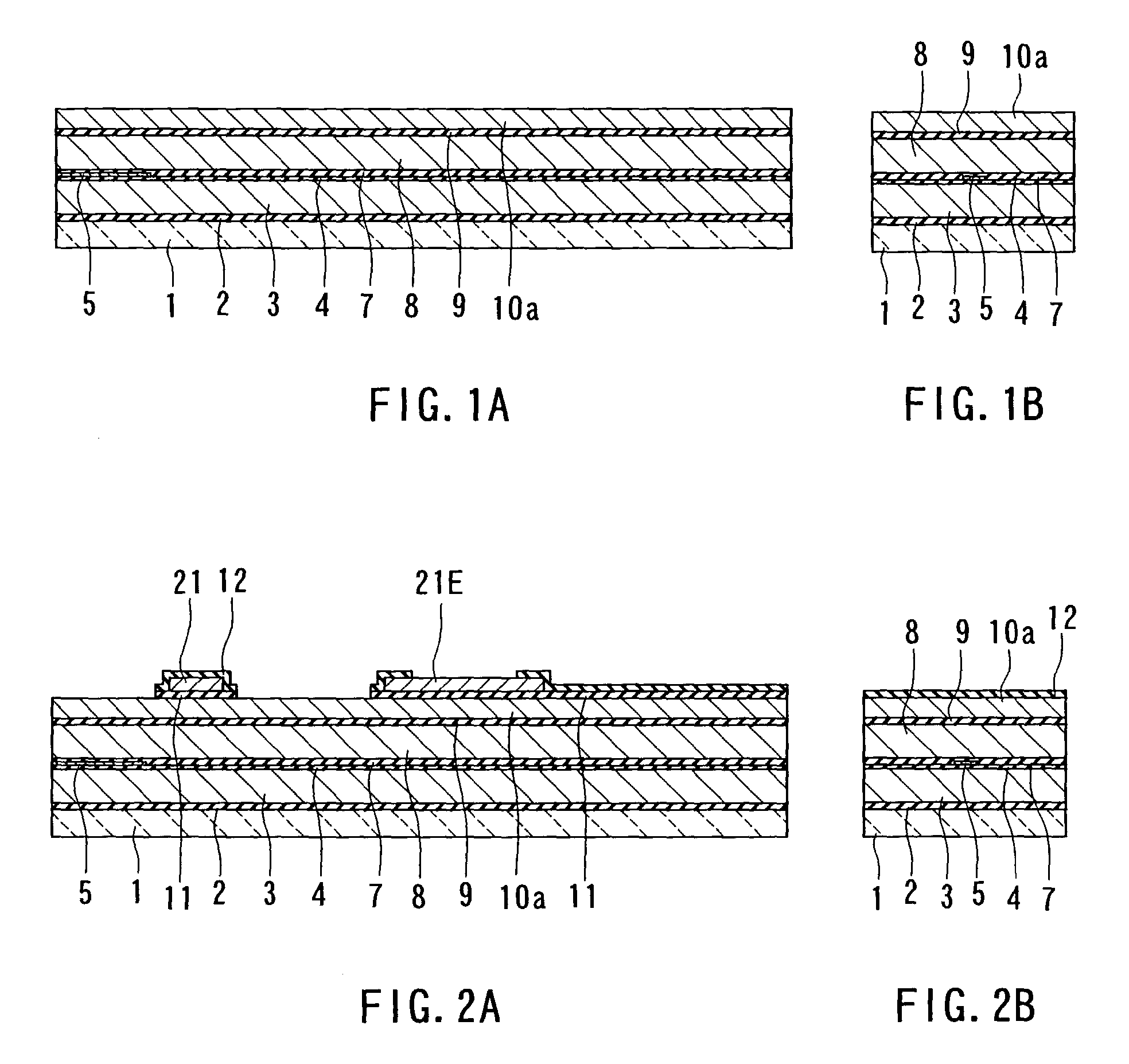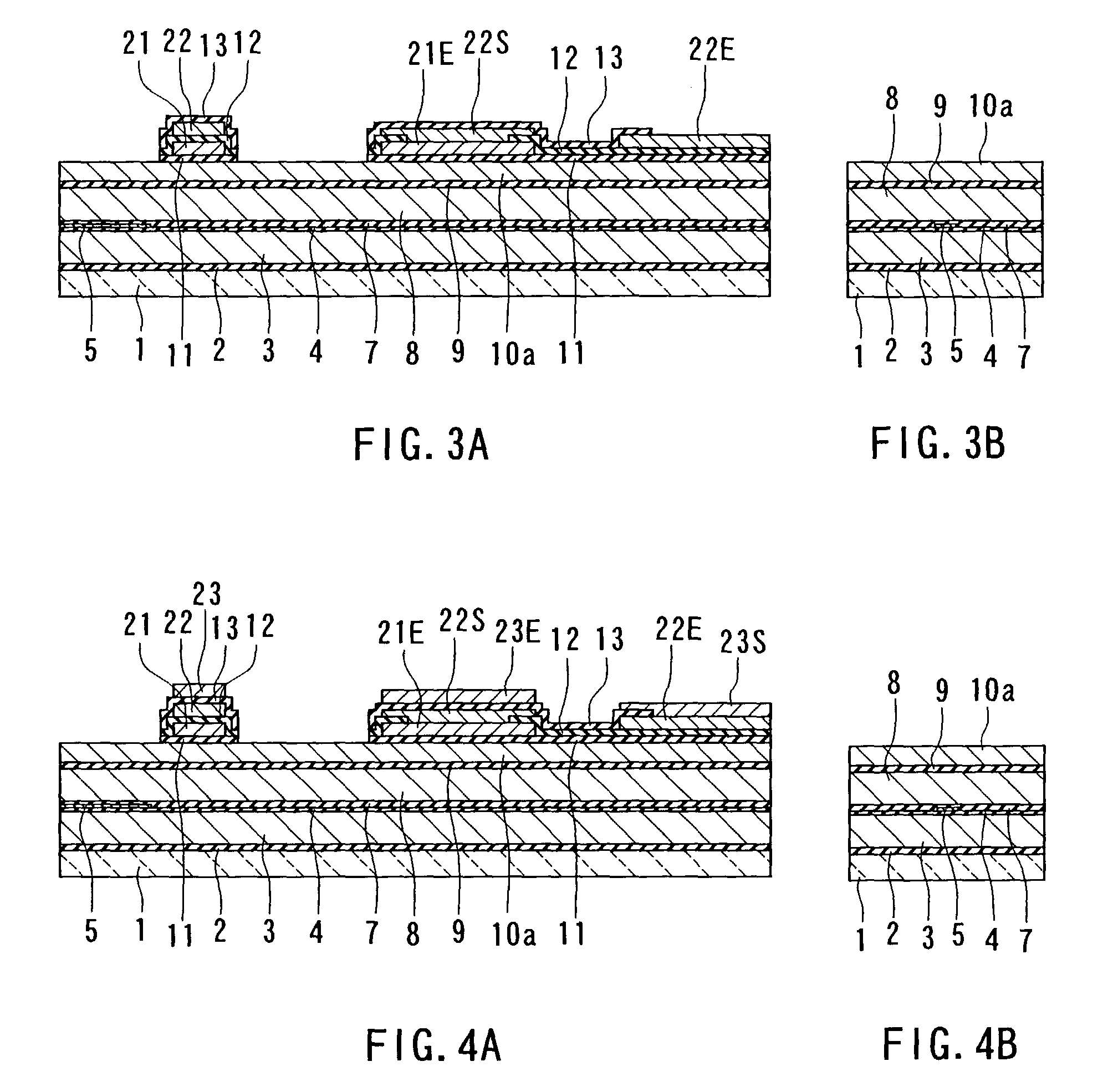Thin-film magnetic head and method of manufacturing same
- Summary
- Abstract
- Description
- Claims
- Application Information
AI Technical Summary
Benefits of technology
Problems solved by technology
Method used
Image
Examples
first embodiment
[0128]First, a method of manufacturing a thin-film magnetic head according to a first embodiment of the invention will now be described with reference to FIGS. 1A to 14A, FIGS. 1B to 14B, and FIG. 15 to FIG. 20. FIGS. 1A to 14A are cross sections each orthogonal to the air bearing surface and the top surface of the substrate. FIGS. 1B to 14B are cross sections of the magnetic pole portion each parallel to the air bearing surface. FIG. 15 is a perspective view showing the thin-film magnetic head according to the present embodiment excluding an overcoat layer. FIG. 16 to FIG. 20 are plan views for explaining the method of forming a thin-film coil of the present embodiment.
[0129]In the method of manufacturing the thin-film magnetic head of the present embodiment, as shown in FIGS. 1A and 1B, an insulating layer 2 made of alumina (Al2O3), for example, is first deposited to a thickness of about 1 to 3 μm on a substrate 1 made of aluminum oxide and titanium carbide (Al2O3—TiC), for exampl...
second embodiment
[0199]Now, a thin-film magnetic head and a method of manufacturing the same according to a second embodiment of the invention will be described with reference to FIGS. 30A to 40A, FIGS. 30B to 40B, and FIGS. 41 to 45. FIGS. 30A to 40A are cross sections each orthogonal to the air bearing surface and the top surface of the substrate. FIGS. 30B to 40B are cross sections of the magnetic pole portion each parallel to the air bearing surface. FIGS. 41 to 45 are plan views for explaining the method of forming a thin-film coil of the present embodiment.
[0200]The method of manufacturing the thin-film magnetic head according to the present embodiment is the same as that of the first embodiment up to the step of forming the first layer 10a of the bottom pole layer 10 as shown in FIGS. 30A and 30B. The material, thickness, and forming method of the first layer 10a are the same as in the first embodiment. Here, by way of example, the first layer 10a shall be formed of CoFeN to a thickness of 0....
third embodiment
[0235]Now, a method of manufacturing a thin-film magnetic head according to a third embodiment of the invention will be described with reference to FIGS. 46A to 62A, FIGS. 46B to 62B, and FIGS. 63 to 66. FIGS. 46A to 62A are cross sections each orthogonal to the air bearing surface and the top surface of the substrate. FIGS. 46B to 62B are cross sections of the magnetic pole portion each parallel to the air bearing surface. FIGS. 63 to 66 are plan views for explaining the method of forming a thin-film coil of the present embodiment.
[0236]In the method of manufacturing the thin-film magnetic head of the present embodiment, as shown in FIGS. 46A and 46B, an insulating layer 2 made of alumina (Al2O3), for example, is first deposited to a thickness of about 2 to 5 μm on a substrate 1 made of aluminum oxide and titanium carbide (Al2O3—TiC), for example. On the insulating layer 2, a bottom shield layer 3 of a magnetic material such as Permalloy (NiFe) is formed to a thickness of about 2 t...
PUM
 Login to View More
Login to View More Abstract
Description
Claims
Application Information
 Login to View More
Login to View More - R&D
- Intellectual Property
- Life Sciences
- Materials
- Tech Scout
- Unparalleled Data Quality
- Higher Quality Content
- 60% Fewer Hallucinations
Browse by: Latest US Patents, China's latest patents, Technical Efficacy Thesaurus, Application Domain, Technology Topic, Popular Technical Reports.
© 2025 PatSnap. All rights reserved.Legal|Privacy policy|Modern Slavery Act Transparency Statement|Sitemap|About US| Contact US: help@patsnap.com



